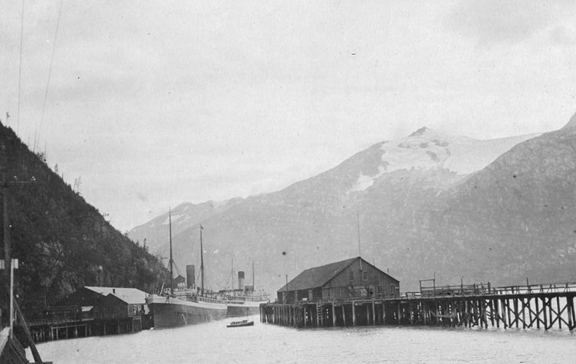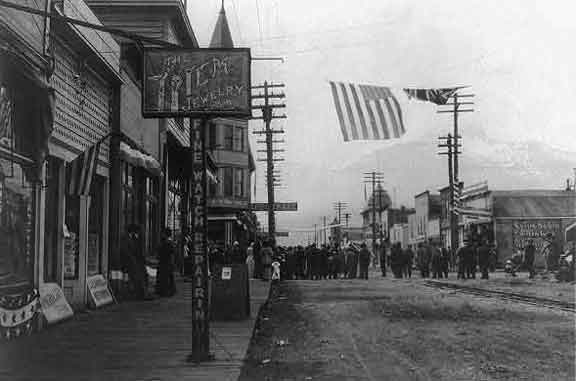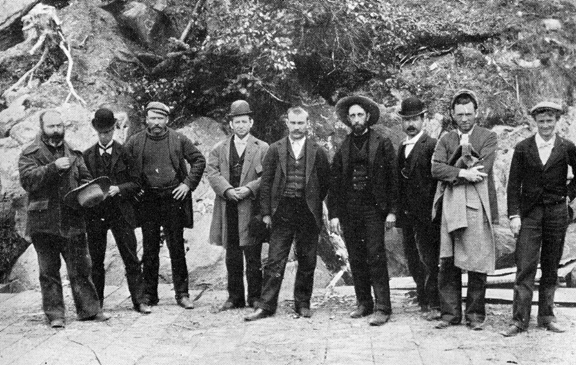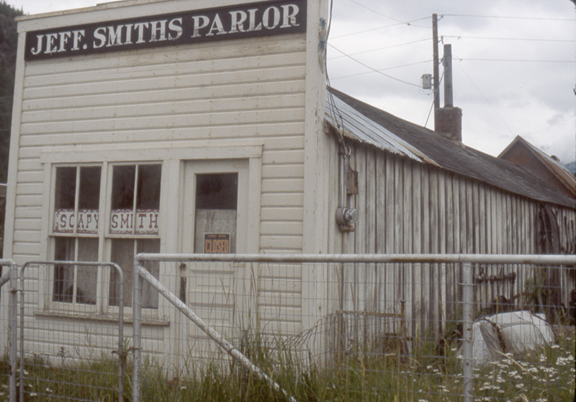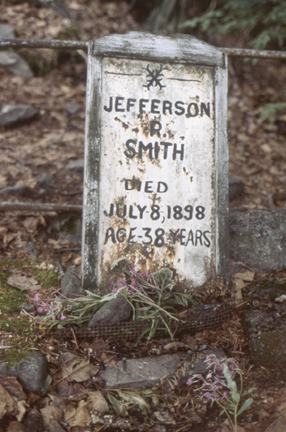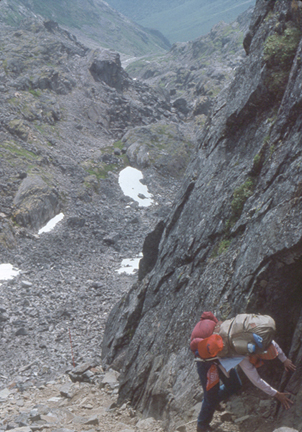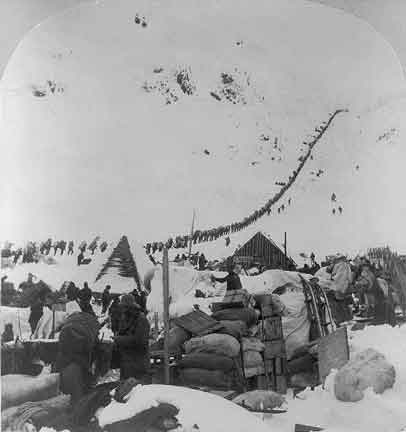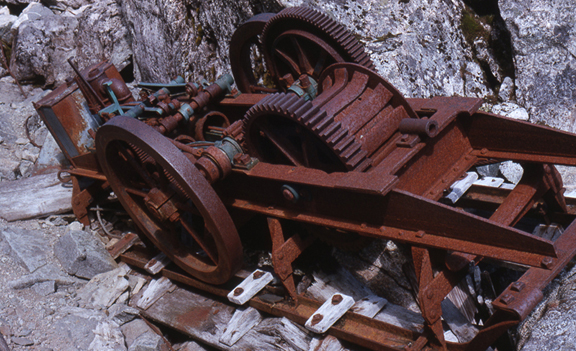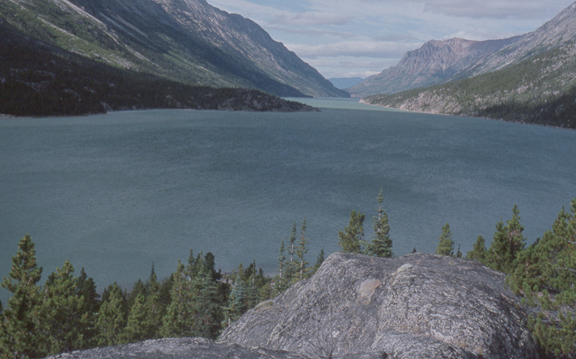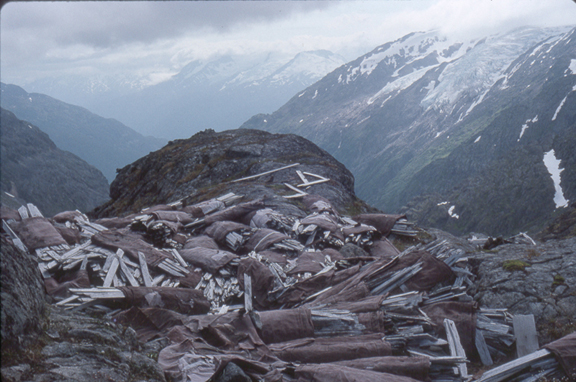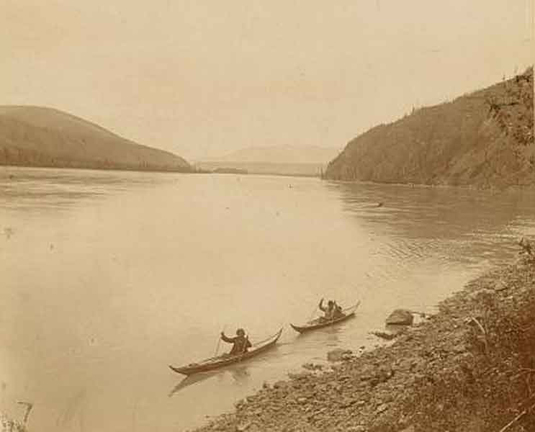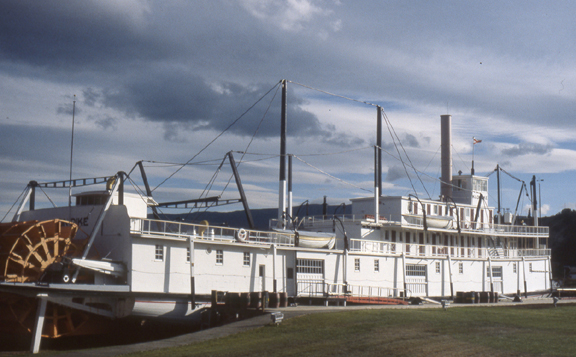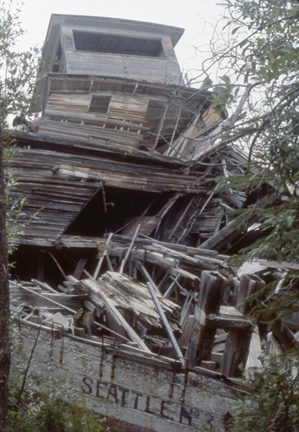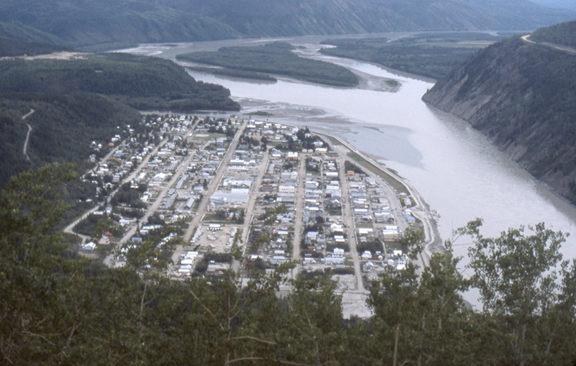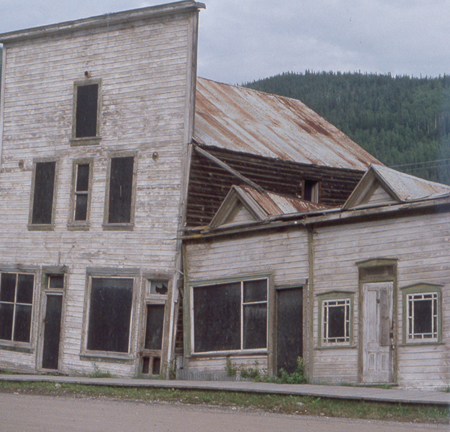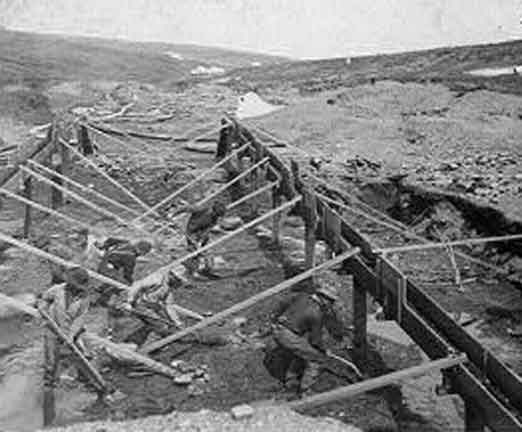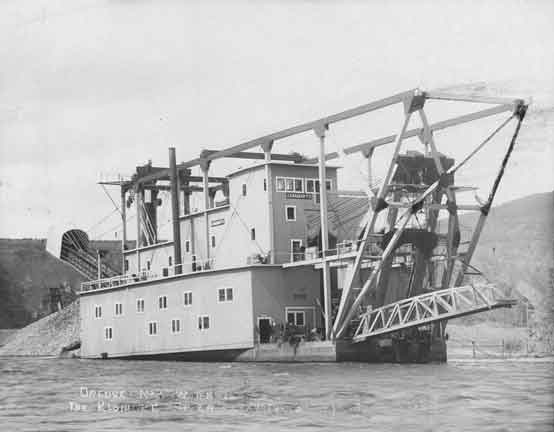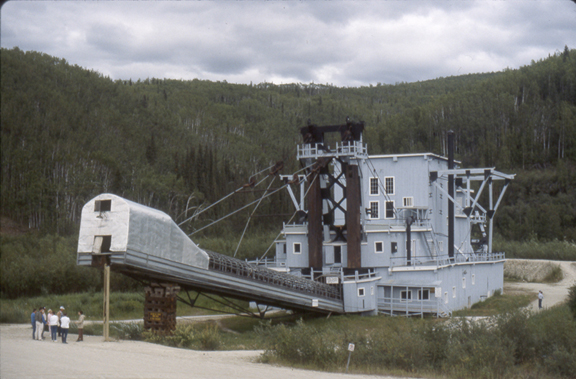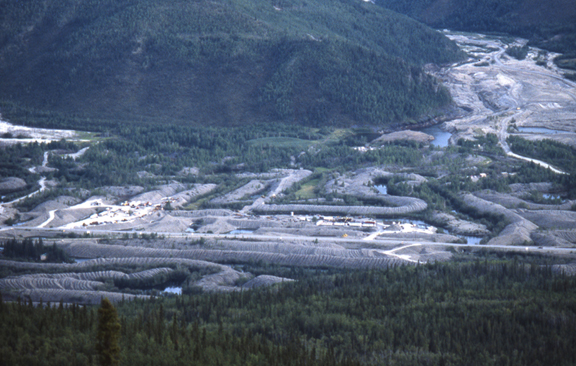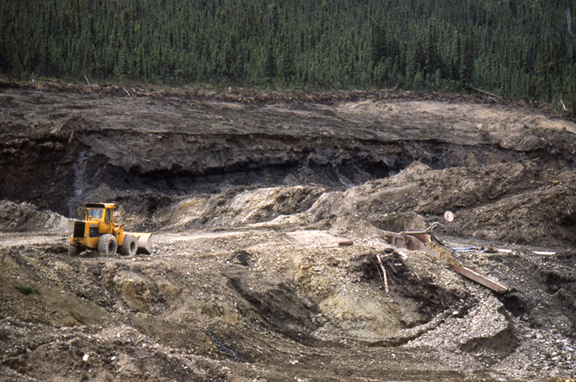 |
 |
|
In the 1890s, discovery of gold in streams flowing into the Klondike River in northwest Canada sparked one of the last of the great gold rushes.
|
|
|
 |
 |
|
The new gold fields were difficult to reach. Most gold-seekers took a ship up the coast from Seattle or San Francisco, to Skagway, Alaska.
|
|
 |
 |
|
Skagway merchants thrived on the stream of people going to and fro from the Canadian gold fields.
|
|
|
|
|
 |
 |
|
Also in Skagway to profit from the Klondike gold rush were Jefferson “Soapy” Smith (4th from the right), and his gang of crooks.
Smith was a native Georgian who went west and made his bad name in Denver and Creede, Colorado, before heading north at the start of the gold rush.
|
|
 |
 |
|
Soapy Smith’s saloon was the headquarters of crime in Skagway.
|
|
|
 |
 |
|
Later, someone installed a winch to haul supplies up the trial. Canadian Mounties required anyone entering the country to bring enough supplies to last the winter.
|
|
|
|
|
 |
 |
|
When they reached the top of Chilcoot Pass, the gold seekers entered Canada.
|
|
 |
 |
|
Just over Chilcoot Pass, Lake Lindeman, British Columbia is a welcome sight.
|
|
|
|
|
 |
 |
|
The Chilcoot trail was only the first part of the trek. Lake Lindeman flows into the Yukon River. On reaching Lake Lindeman, gold-seekers had to build wooden boats to float down the Yukon River to Dawson City.
|
|
 |
 |
|
Just on the American side of Chilcoot Pass is an abandoned cache of collapsible canvas boats. The guess is that the Mounties considered the craft too flimsy and dangerous, and refused to allow them into the country.
|
|
|
|
|
 |
 |
|
From Lake Lindeman, gold seekers floated hundreds of miles downstream to the gold fields.
|
|
 |
 |
|
In later years, steamboats, like this one at Whitehorse, carried people and supplies up and down the Yukon.
|
|
|
|
|
 |
 |
|
Not all the old steamboats are so well preserved.
|
|
 |
 |
|
The gold seekers floated down the Yukon River to Dawson City, at the confluence of the Klondike and Yukon rivers.
|
|
|
|
|
 |
 |
|
Dawson City, Yukon Territory
|
|
 |
 |
|
A few miles up the Klondike River from Dawson, miners washed gold nuggets from the creek gravel.
|
|
|
|
|
 |
 |
|
Miners later built giant floating dredges that dug up the gravel, washed the gold out, and put the gravel back, behind the dredge.
|
|
 |
 |
|
One dredge, now landlocked, is kept as a museum.
|
|
|
|
|
 |
 |
|
Dredge tailings form distinctive ridges of gravel along the Klondike valley.
|
|
|
 |
 |
|
10/10/2009
|
|
